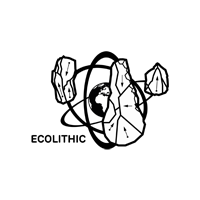ECOLITHIC is the acronym of “A Radical Ecosystems View of Lithic Macro-Evolution” – a collaborative research project funded by the Volkswagen Foundation from 2025-2028 in its funding line Pioneering Research – Exploring the Unknown Unknown.
The project seeks to develop a new macro-scale perspective on long-term developments in early stone tool and stone working technologies of the Palaeolithic period in the hope to unearth evolutionary dynamics that operate on timescales escaping other disciplines interested in the “big history” of technology.
It aims to address five interrelated “unknown unknowns” of current research on technology and technological evolution in the human deep past (knowledge gaps and blind spots which the research community has not yet identified, but when brought to attention promise to revamp how we do such research):
- Technological worlds are currently not a target or concern in Palaeolithic technological research. They are, moreover, rarely approached as complex wholes with distinct but currently undescribed organizational structures and hierarchies (especially levels of organization and between-level interactions).
- Present research has not adequately addressed the unit of evolution problem in the study of Palaeolithic technology as artefacts are commonly assumed to be the intuitive, default, and self-evident units of analysis. This has led to a gross and theoretically unjustified neglect of systems, assemblages, and larger communities of technologies as at least equally relevant units of evolution.
- Ongoing research ignores the context of evolution problem in the study of Palaeolithic technology, especially how higher-level structures emerge from lower-level technological entities and processes (and in turn pose limits on what is possible and/or works on lower levels). This has led to an overemphasis on chronological developments and relationships, preoccupations with environmental adaptation, and an obsession with phyletic evolution (lineage-like evolution).
- Present research on Palaeolithic technology exhibits a narrow outlook on two central questions: how and why does technology evolve over the long-term? The first question (how) is routinely answered by referring to individual tools and operational sequences or specific properties and traits thereof (including complexity and diversity), while the second question (why) is almost exclusively answered with reference to technology-external factors such as climate, ecology, or culture (heteronomy assumption). As a result, research currently overlooks technology-internal dynamics of change and has not paid any attention to the question of how and why larger technological worlds are structured and organized the way they are, and, relatedly, how these worlds operate as a consequence thereof (part-whole integration).
- Ongoing research almost unanimously proceeds with the assumption that technological totalities (whatever they may be) are essentially aggregates and thus not much more than the sum of their constitutive parts. This fundamentally disregard the dynamic co-constitution of parts and wholes and generally forecloses engagement with technological worlds as large-scale ecosystems.
In response to these pertinent yet currently unconceived challenges of studying the macro-scale evolution of Palaeolithic technology, the project will develop the missing conceptual apparatus allowing researchers to talk about and analyze such ecosystems of stone tool and stone working technologies, and to investigate how their higher-level functionality is linked to variously interactive and co-dependent technological parts (and what these are). Accordingly, the project addresses both nascent theoretical and empirical challenges, mobilizing theory from across interdisciplinary evolutionary studies, complexity science, (neo-)cybernetics, organizational science, the philosophy of technology as well as archaeology and articulating its key insights with debates in Anthropocene studies and Earth-system science – in particular vis-à-vis the role of technology in planetary evolution – as well as newer methods in quantitative-computational archaeology, agent-based modelling, and evolutionary network simulation. The project thereby transcends established disciplinary collaborations and charts new ways of pairing conceptual and empirical work on Palaeolithic technology to better understand the evolutionary background of what has been called the human “technological condition” – for many a harbinger of the Anthropocene.
The project brings together a dedicated group of international collaborators to facilitate theory-work and methodological implementation and to discuss new avenues for interdisciplinary research on deep-time technological evolution.
